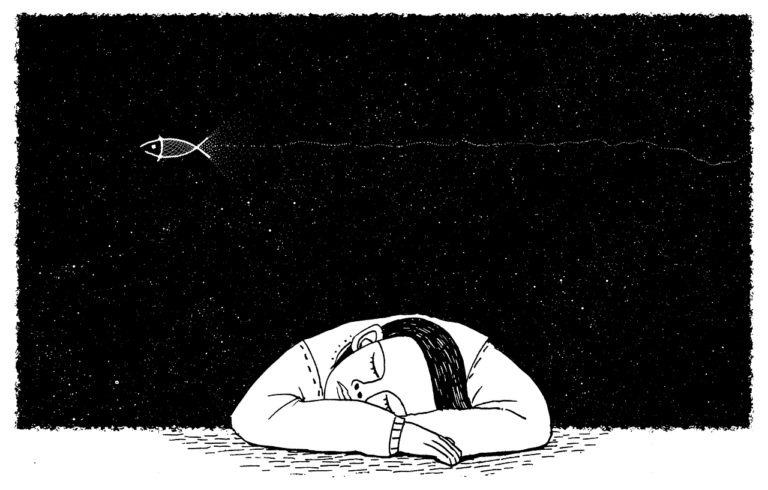How to Get Diagnosed With Sleep Apnea
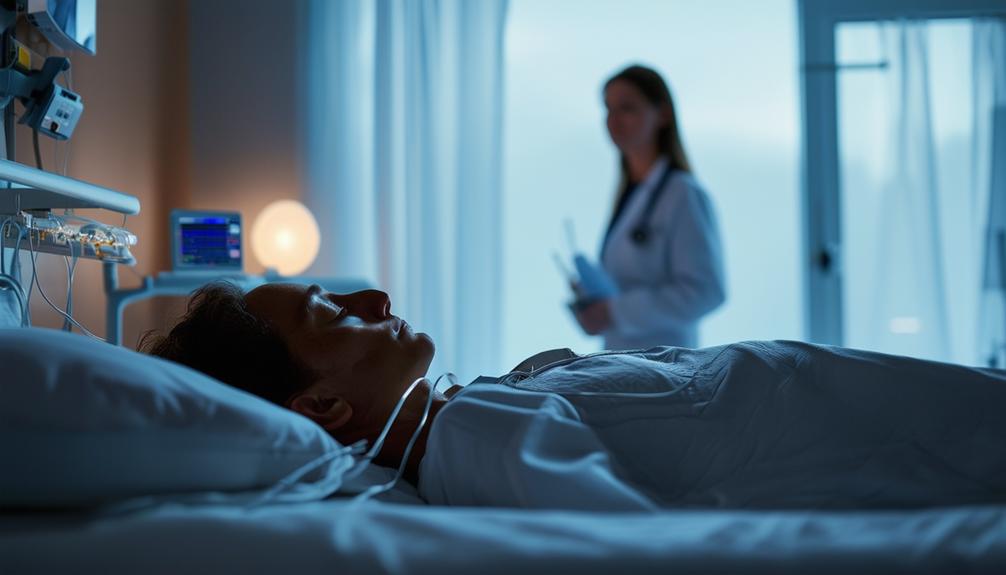
To get diagnosed with sleep apnea, consult a sleep specialist who will review your symptoms and medical history. They may recommend a home sleep test that monitors your breathing, oxygen levels, and heart rate overnight. Alternatively, you might undergo a polysomnogram in a sleep lab, which provides thorough monitoring of your physiological parameters. Keeping a sleep diary can also be useful for identifying patterns. In more complex cases, drug-induced sleep endoscopy helps visualize your airway. Analysis by specialists defines the severity of apnea using metrics like the apnea-hypopnea index (AHI). If you’re interested, let’s explore how these methods detail your personalized treatment plan.
Noteworthy Details
- Schedule an appointment with a sleep specialist to evaluate symptoms and medical history.
- Undergo a home sleep test to monitor breathing, oxygen levels, and heart rate in your own sleep environment.
- Participate in a polysomnogram at a sleep center to assess physiological parameters during sleep.
- Keep a detailed sleep diary to track sleep patterns and identify potential disturbances.
- Consider Drug-Induced Sleep Endoscopy (DISE) for advanced airway visualization and personalized treatment planning.
Consult a Sleep Specialist
If you suspect you have sleep apnea, it’s important to schedule an appointment with a sleep specialist to evaluate your symptoms and medical history. During your consult, the sleep specialist will meticulously review your symptoms, such as frequent awakenings, loud snoring, and daytime fatigue. A detailed medical history will be taken to identify any underlying conditions that may contribute to your sleep disturbances.
The sleep specialist may recommend a sleep study to monitor your breathing patterns during sleep. This can be conducted either in a sleep center or, in some cases, at home. The data collected from the sleep study will be vital for the diagnosis. It reveals the frequency and duration of breathing interruptions, which helps determine the severity of your sleep apnea.
Once the diagnosis is established, the sleep specialist will discuss various treatment options tailored to your specific needs. These might include Continuous Positive Airway Pressure (CPAP) therapy, lifestyle changes, or other medical interventions. Managing sleep apnea effectively requires a holistic approach, and your specialist will guide you through this journey, ensuring you feel supported and informed every step of the way.
Scheduling that initial appointment is your first step toward better sleep and health.
Undergo a Home Sleep Test
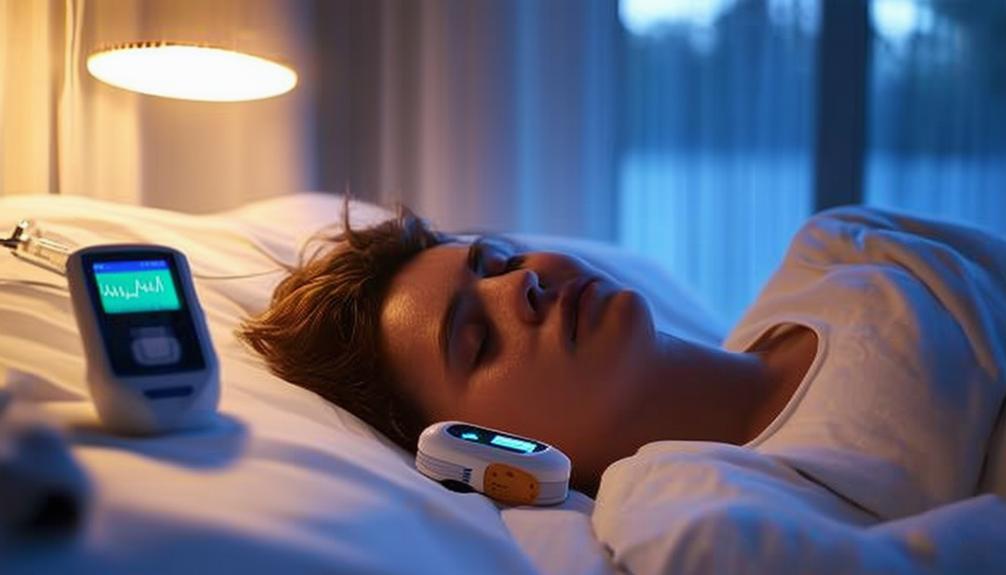
You’ll need to undergo a home sleep test, which involves using specialized equipment to monitor your breathing patterns, oxygen levels, and heart rate while you sleep.
Detailed instructions will guide you through the setup to guarantee accurate data collection.
Interpreting the results will help determine if further evaluation with an in-lab sleep study is necessary for thorough diagnosis.
Test Procedure Overview
Undergoing a home sleep test involves wearing specialized monitoring equipment that tracks your breathing patterns, oxygen levels, and heart rate fluctuations while you sleep in your own bed. This form of sleep testing, known as Home Sleep Apnea Testing (HSAT), is pivotal for diagnosing sleep disorders, particularly obstructive sleep apnea. The convenience of home sleep tests allows you to maintain your usual sleep environment, which can yield more accurate results for an obstructive sleep apnea diagnosis.
When you begin the home sleep test procedure, you’ll be provided with detailed instructions on how to set up and use the home sleep test equipment. Typically, these devices include nasal cannulas or sensors to measure airflow, belts to monitor respiratory effort, and a pulse oximeter to track your oxygen saturation and heart rate. Proper placement and usage of these sensors are essential for collecting high-quality data necessary for diagnosing sleep apnea.
Home sleep tests are an evidence-based, clinically validated method to detect obstructive sleep apnea. By undergoing this sleep testing at home, you’re taking a crucial step toward understanding your respiratory health, paving the way for an accurate obstructive sleep apnea diagnosis, and ultimately, effective treatment.
Interpreting Test Results
Understanding the results of your home sleep test is essential for determining the presence and severity of sleep apnea. Your test results will provide critical data on your breathing patterns, oxygen levels, and heart rate throughout the night. The primary indicators that healthcare providers look for are the frequency of apneas and hypopneas—episodes where your breathing briefly stops or significantly decreases.
To diagnose sleep apnea accurately, the home sleep test measures the number of apneas and hypopneas per hour, known as the Apnea-Hypopnea Index (AHI). An AHI of 5-15 events per hour typically indicates mild sleep apnea, 15-30 suggests moderate sleep apnea, and over 30 signifies severe sleep apnea.
If your test results show abnormal breathing patterns or low oxygen levels, your healthcare provider may recommend an in-lab sleep study for a more thorough evaluation. An in-lab study can provide more detailed insights by monitoring additional physiological parameters.
Accurate interpretation of your home sleep test results is crucial for a proper diagnosis and subsequent treatment plan. By understanding these results, you’re taking a crucial step toward improving your sleep health and overall well-being.
Participate in a Polysomnogram
To participate in a polysomnogram, you’ll need to prepare by following specific guidelines provided by your sleep specialist, such as avoiding caffeine and keeping a regular sleep schedule.
During the study, sensors will monitor various physiological parameters to provide detailed data. This data is essential for your sleep team to accurately interpret the severity of your sleep apnea and tailor an effective treatment plan.
Preparing for the Study
Prior to your polysomnogram, make sure you follow all pre-study instructions, such as abstaining from caffeine, alcohol, and certain medications. It’s important to come prepared to the sleep center with comfortable sleepwear, personal items, and any necessary medications. Expect to spend the night in a private room equipped with specialized equipment for overnight monitoring.
During the polysomnogram, technicians will attach sensors to your body to measure brain waves, breathing patterns, oxygen levels, and heart rate. This thorough monitoring helps the sleep specialist gather essential data. The sensors might feel a bit intrusive initially, but they’re designed to be as unobtrusive as possible.
Here’s a quick checklist to ensure you’re ready:
| Preparation Step | Reason |
|---|---|
| Abstain from caffeine | Prevents interference with sleep patterns |
| Avoid alcohol | Reduces the risk of disrupted sleep cycles |
| Bring medications | Ensures continuity of necessary treatments |
This detailed preparation ensures the results analysis can accurately determine if you have sleep apnea. Remember, the aim is to capture a typical night’s sleep under observation, so following these guidelines is crucial for obtaining reliable data.
Understanding Test Results
After your polysomnogram, sleep specialists meticulously analyze the data to diagnose sleep apnea and evaluate its severity. The test results from this thorough sleep study provide a detailed look at your brain waves, oxygen levels, heart rate, and movements during sleep. They focus on identifying sleep disturbances and abnormal breathing patterns that signal sleep apnea.
In reviewing your polysomnogram, sleep specialists will examine episodes of apnea (complete cessation of breathing) and hypopnea (partial obstruction of airflow). They calculate the Apnea-Hypopnea Index (AHI) to determine the severity of your condition. An AHI score categorizes sleep apnea as mild, moderate, or severe, guiding the creation of your individualized treatment plan.
Understanding your test results gives you insights into how sleep apnea affects your nightly rest. You’ll see correlations between your breathing patterns and sleep disturbances, which can demystify symptoms like daytime fatigue and morning headaches. This clarity fosters a sense of belonging as you join a community of individuals taking steps towards better sleep health.
With an accurate diagnosis from your polysomnogram, sleep specialists can recommend targeted treatments like CPAP therapy, lifestyle changes, or even surgery, ensuring you receive the best care for your specific needs.
Keep a Sleep Diary
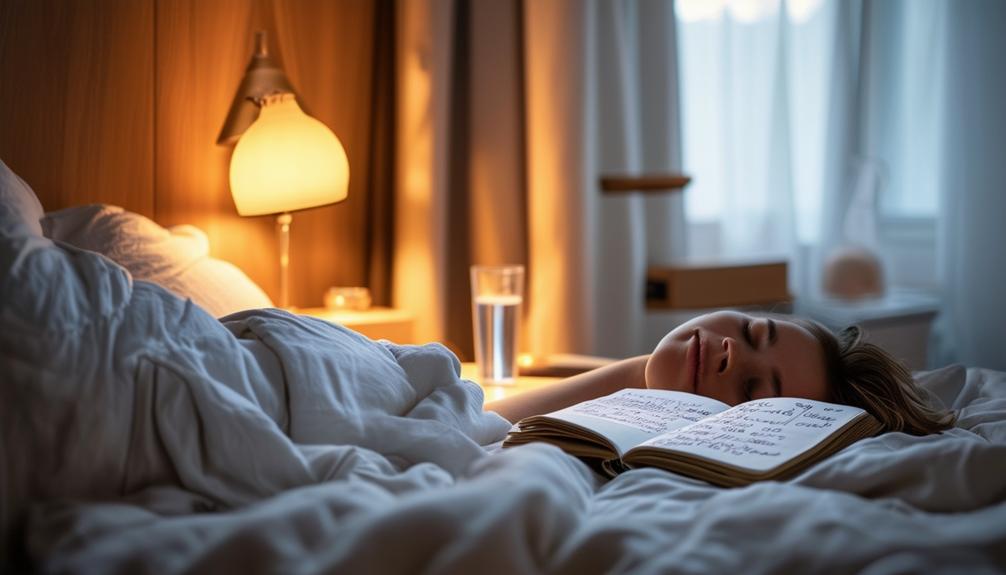
Start maintaining a detailed sleep diary for up to two weeks to capture your bedtime, wake-up times, and any interruptions during the night. This diary is an essential step in identifying sleep disturbances and patterns that may contribute to sleep disorders like sleep apnea. By recording your sleep habits, you’ll provide invaluable data that can guide the diagnostic process and subsequent treatment plans.
A well-kept sleep diary should include:
- Bedtime and Wake-Up Times: Note the exact times you go to bed and wake up each day to identify your overall sleep patterns.
- Sleep Interruptions: Document any instances when you wake up during the night, including the duration and potential causes.
- Daily Activities: Record factors such as caffeine or alcohol consumption, exercise, and stress levels, as these can impact your sleep quality.
A sleep diary helps sleep specialists understand your individual sleep habits and pinpoint specific issues affecting your rest. This methodical approach not only assists in the diagnosis of sleep disorders but also in tailoring effective treatment plans.
Consider Drug-Induced Sleep Endoscopy
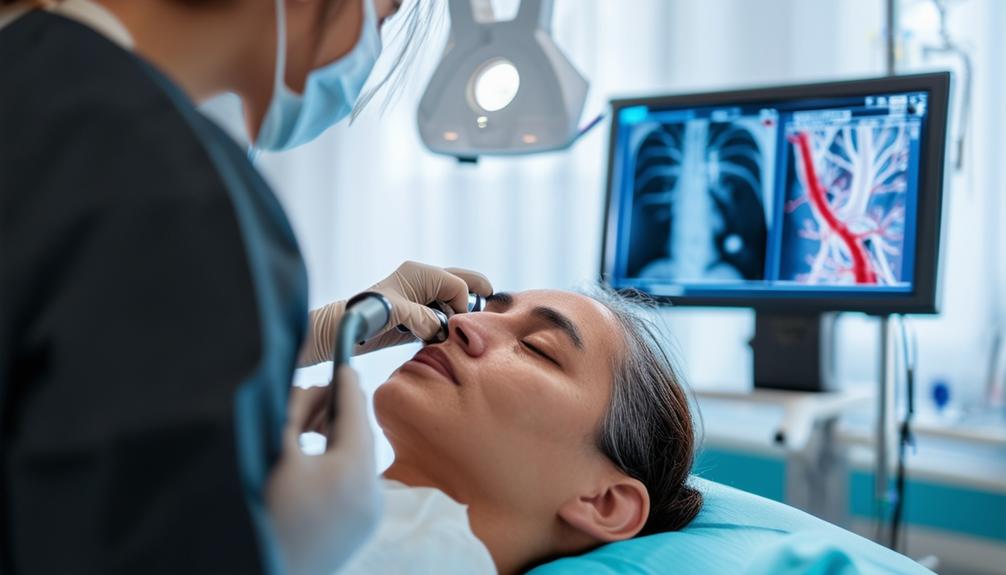
Once you’ve gathered detailed data from your sleep diary, you might want to contemplate Drug-Induced Sleep Endoscopy (DISE) to pinpoint the exact site of airway obstruction in obstructive sleep apnea.
DISE is an advanced diagnostic tool that provides precise airway visualization, allowing clinicians to identify the specific locations of airway obstructions. It’s particularly beneficial if you’ve been diagnosed with obstructive sleep apnea and are considering surgical treatment options like Transoral Robotic Surgery (TORS) or nerve stimulators.
During DISE, a sedative is administered to mimic natural sleep conditions, ensuring patient comfort while allowing for accurate assessment of the airway. The procedure involves using a flexible endoscope to visualize the airway and identify the site of obstruction. This detailed information is essential for developing an individualized treatment plan tailored to your unique anatomy and needs.
DISE helps clinicians determine the most appropriate surgical interventions, potentially improving outcomes by targeting specific obstructions. By pinpointing the exact site of airway obstruction, DISE facilitates more effective and personalized treatment strategies, enhancing your chances of achieving significant relief from sleep apnea symptoms.
This targeted approach ensures that your treatment plan is as effective and individualized as possible.
Review Diagnosis and Treatment Plan
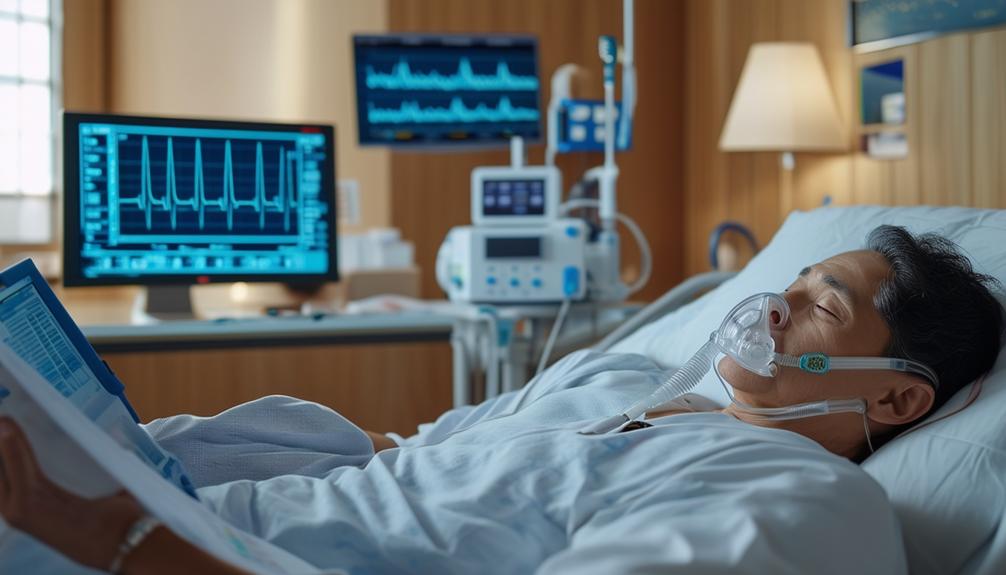
Your journey towards effectively managing sleep apnea begins with a thorough evaluation from a healthcare provider who’ll consider your symptoms, sleep history, and risk factors. Following this initial assessment, you’ll likely be referred to a sleep specialist for a detailed evaluation and diagnosis.
This specialist will conduct a sleep study, such as polysomnography, to monitor your breathing, heart rate, and brain activity during sleep. Based on these findings, the sleep specialist will develop a personalized treatment plan tailored to your specific needs. This plan often includes interventions such as CPAP therapy or oral appliances, designed to improve your breathing and sleep quality.
Here’s what you can expect:
- Diagnosis Confirmation: Your sleep study results will provide a clear diagnosis, revealing the severity of your sleep apnea and guiding the next steps.
- Personalized Treatment Plan: Collaborate with your sleep specialist to create a treatment plan that may include CPAP therapy, oral appliances, or lifestyle changes.
- Ongoing Management: Regular follow-ups with your healthcare provider to adjust treatments and ensure optimal outcomes.
Frequently Asked Questions
How Do I Get a Sleep Apnea Diagnosis?
To get a sleep apnea diagnosis, consult your doctor for a referral. A sleep specialist will review your medical history, common symptoms, and lifestyle factors. A sleep study or home testing, often covered by insurance, confirms the diagnosis.
What Qualifies You to Have Sleep Apnea?
Did you know 25% of adults experience loud snoring? A sleep study can reveal apnea events, oxygen levels, and sleep disruptions. Risk factors include body mass, airway obstruction, and medical history. Daytime fatigue is a key symptom.
What Is the Life Expectancy With Someone With Sleep Apnea?
Your life expectancy with sleep apnea depends on severity levels. Untreated, it can cause oxygen desaturation, increasing cardiovascular risks and mortality rates. Effective treatment options, weight management, and lifestyle changes can mitigate daytime fatigue and chronic conditions, improving outcomes.
Can an Apple Watch Diagnose Sleep Apnea?
Coincidentally, while your Apple Watch excels in sleep tracking, heart rate, and fitness monitoring, it can’t diagnose sleep apnea. It lacks precise respiratory patterns and oxygen levels detection needed for accurate snoring detection and thorough biometric data analysis.
Conclusion
To put it into perspective, around 22 million Americans suffer from sleep apnea, yet 80% of moderate to severe cases remain undiagnosed.
By consulting a sleep specialist, undergoing a home sleep test or polysomnogram, keeping a sleep diary, and considering drug-induced sleep endoscopy, you’ll be well-equipped to address this serious condition.
Early diagnosis and treatment can greatly enhance your quality of life and reduce associated health risks.
Don’t wait; take proactive steps today.


